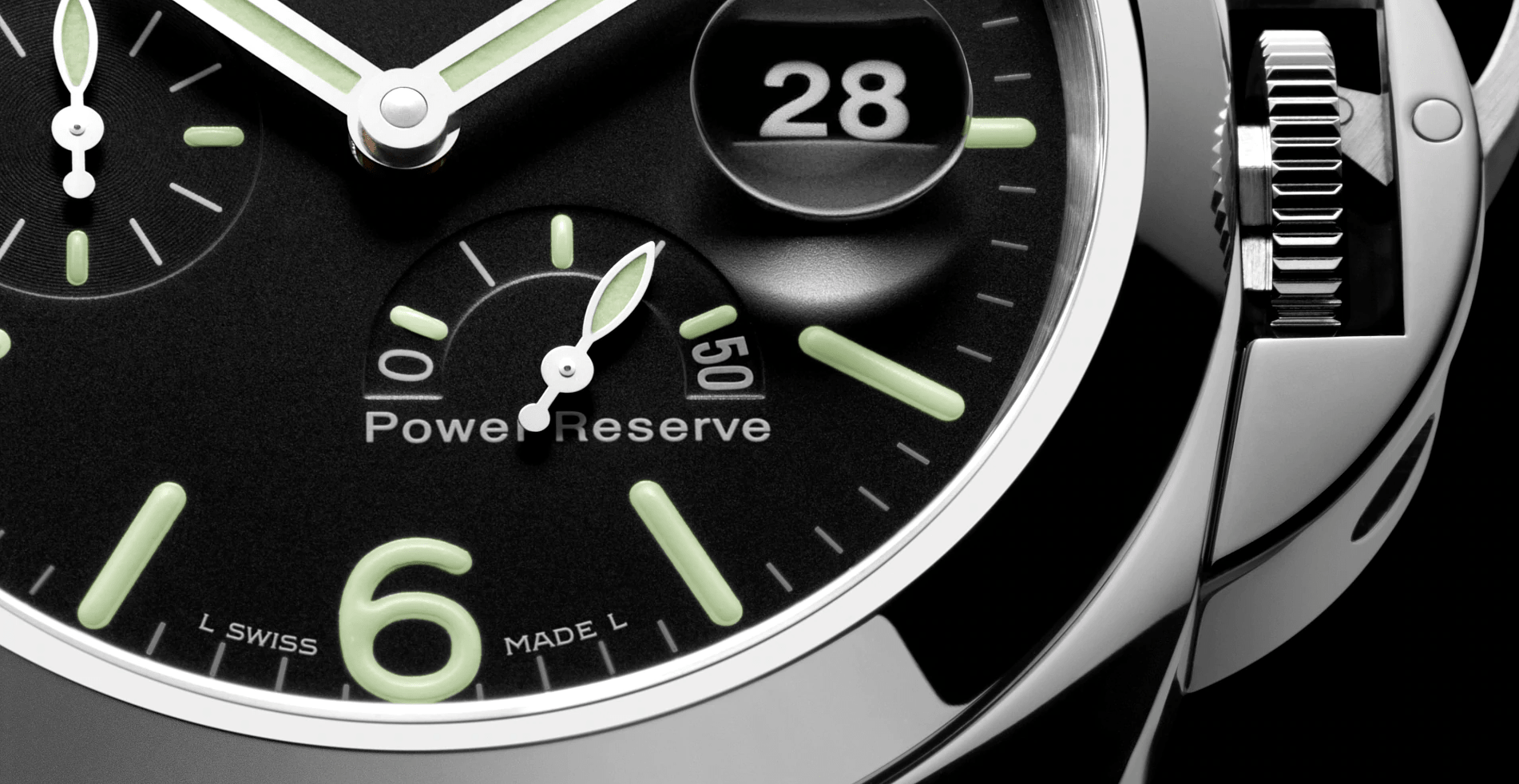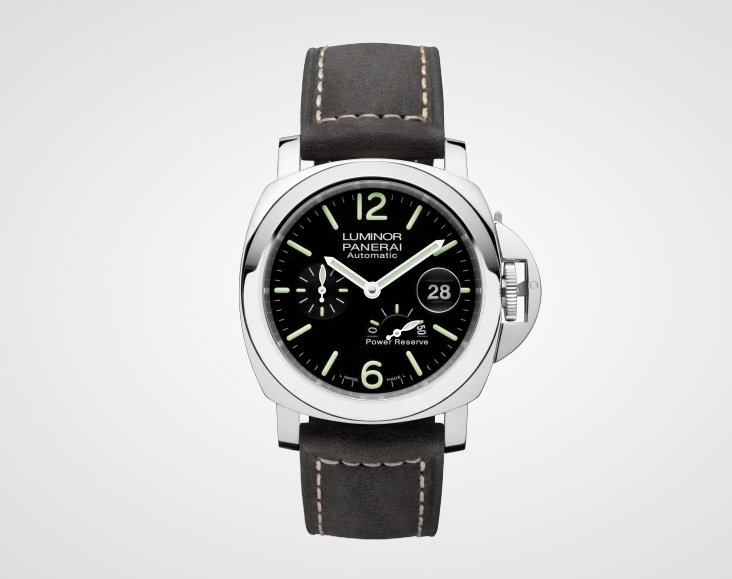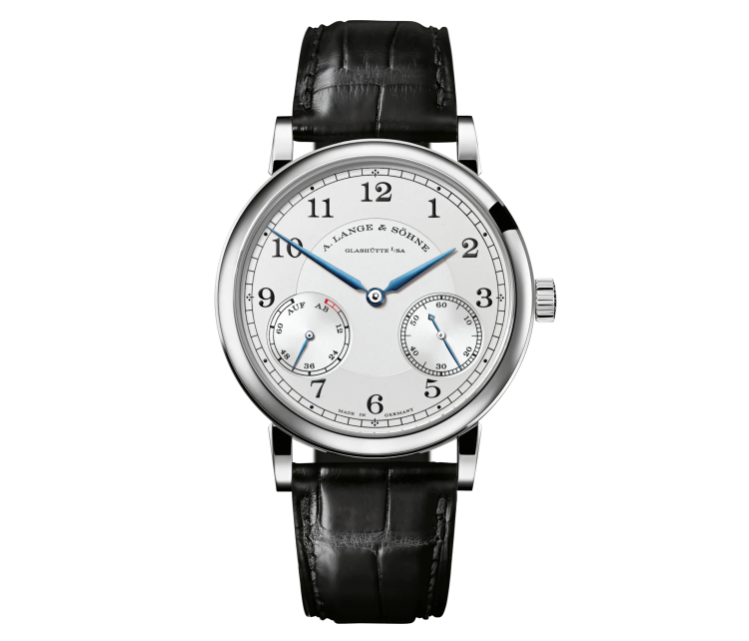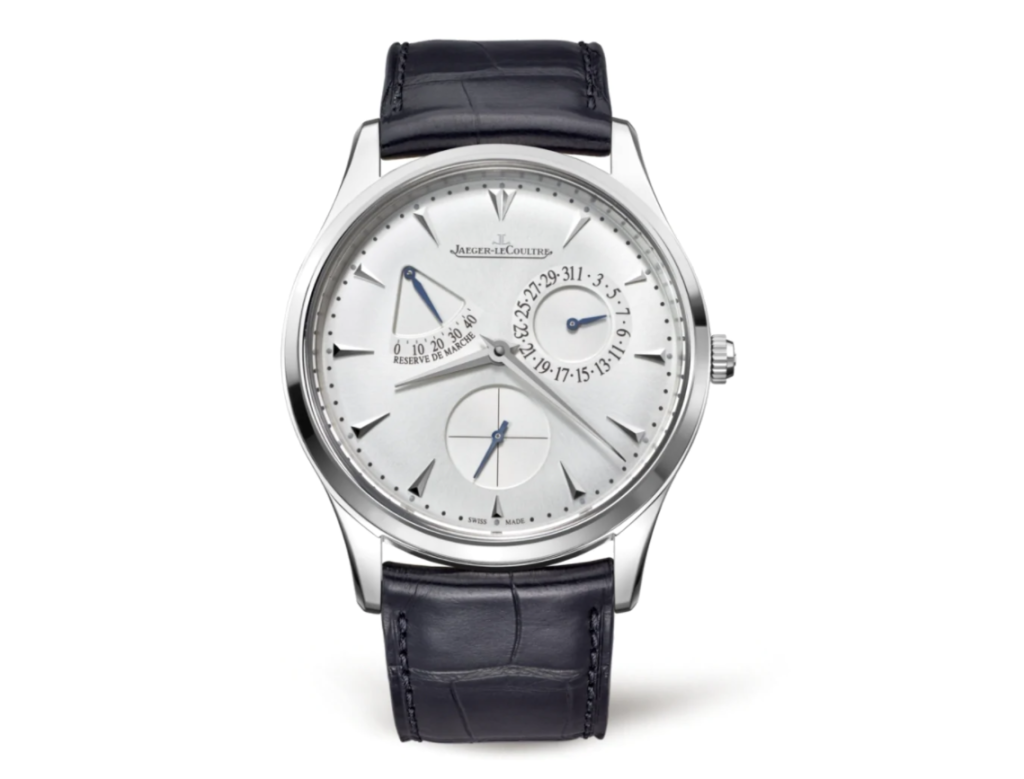
Just like old-school hand-wound watches, mechanical watches work on the basis of mechanical energy stored in a wound spring. The more tightly wound the spring is, the longer the watch will continue ticking without the need to be wound. The only real difference between a hand-wound watch and an automatic is the way the spring is wound. A hand-wound watch is self-explanatory. On an automatic watch, a weighted internal rotor rotates as the wearer moves, winding the spring.
Other than that, the two types of movements are basically identical. This includes the fact that when the spring isn’t wound, it will eventually run out. And few things are as frustrating as staring down at your wrist and seeing a dead watch.
A power reserve indicator is a quick, convenient way to keep track of your watch’s current power status. To be fair, this is more important on a hand-winding watch than on an automatic. In theory, an automatic watch should keep on ticking as long as you keep on wearing it. But it’s still useful to know how much power you have left when your watch is in a drawer or on your nightstand. So, which watches make the most of this nifty complication? Here are the five power reserve indicator watches that I think do the best job.
Panerai Luminor Power Reserve

The Panerai Luminor Power Reserve has a square profile with a round dial, with slightly bulged sides that provide just enough curve to the overall design. It’s constructed from stainless steel, with a sharp bezel that slopes noticeably downwards to the crystal. This hybrid square-round design gives the Luminor Power Reserve a steampunk appearance that’s only enhanced by the arched guard that protects the crown. All in all, it’s an eye-catching profile that comes in a medium, 44mm diameter. The back of the case has a 12-sided design that allows it to be opened with a variety of tools. It’s water-resistant to a whopping 300 meters, so it’s suitable for any kind of water exposure.
As the name implies, the Luminor Power Reserve is designed for excellent night visibility. It has a black dial that won’t create shades of grey in the dark. Broad lume hashes mark off the five minute positions, while there are Arabic numerals at 12 and 6 o’clock. The hands also sport broad lume stripes, so you can read the watch clearly at a glance, even in pitch black. There’s a 24-hour subdial at the 9 o’clock position and a date window at the 3 o’clock position. A semicircular power reserve indicator at 4 o’clock measures the power level from 0 to 50 hours. The 24-hour subdial and power reserve indicator also have bright lume hands, rounding out the high-visibility package.
Nomos Tangente Power Reserve

The Nomos Tangente Power Reserve is probably one of the most well-known watches on my list, if only because of its iconic appearance. The dial is wide and pearl white, and manages to look Spartan despite a pair of complications. At the 6 o’clock position, there’s a 24-hour subdial that consists of a single blue hand and black hashes at the hour marks. At the 1 o’clock position, there’s a visual power reserve indicator that consists of a red half circle inside a white slot. As the slot rotates, the red half circle appears to disappear, simulating a draining battery – or an unwinding spring.
The rest of the dial is similarly neat, with black Arabic numerals at the even numbered positions and long hashes at the odd numbered positions. Finer hashes indicate the single minute positions. The hands are cobalt blue, matching the small hand on the 24-hour subdial. The case itself is made of stainless steel, with a tall arched bezel that takes up very little of the 35mm diameter. This accentuates the dial, and makes it look significantly wider than it actually is.
Grand Seiko SBGA211

The Grand Seiko SBGA211, aka the Snowflake, is a classic titanium watch that’s an ideal choice if you love a sleek, unified design. The 41mm case segues almost seamlessly into the tri-link band, with smooth lugs that angle down towards the end. The crown is also partially recessed into the side of the case, albeit ever so slightly. At 12.5mm thick, the watch has a medium wrist feel, making it suitable for both male and female wearers.
The dial has a buffed white appearance, and is mostly bare. The two complications are relatively small, and are ringed in fine silver to create an accent. At the 3 o’clock position, a small square date window with silver numerals tells you the date of the month. At the 7 o’clock position, an arrow-shaped needle illustrates the power level on a quarter-circle gauge. Wide silver hashes indicate the five minute positions, with smaller, fine hashes at the single minute marks. There are no numerals of any kind, although there is a Grand Seiko logo at the 12 o’clock position.
The hour and minute hands are broad and spear shaped, with edges that are cut to catch the light at various angles. The minute hand is long and needle-shaped, extending nearly to the outside of the dial.
A Lange & Sohne 1815 Up/Down

The power reserve on the A Lange & Sohne 1815 UP/DOWN is a throwback to the company’s original power reserve indicator watch, which they patented way back in 1879. The reserve read “AUF” at the top and “AB” at the bottom, which is German for “up” and “down” respectively. The meter on this watch is round instead of vertical, but it serves the same function, measuring up to 72 hours of total power reserve. The power reserve indicator is at the 8 o’clock position, and is balanced out by a 60-minute subdial at the 4 o’clock position.
A black ladder-style index runs around the outside of the cream dial, with large Arabic numerals at the hour marks. The hands are spear-shaped and cobalt blue, with the minute hand reaching just to the edge of the ladder-style index. The case is rose gold, and sports a raised bezel along with a slightly curved crystal. The curvature won’t distort the dial, except a very little bit at the very edge if you’re looking at it from an oblique angle.
JLC Master Ultra Thin Réserve de Marche

The JLC Master Ultra Thin Réserve de Marche has a contemporary design, with three complications on a cobalt blue dial. At the 2 o’clock position, there’s a date subdial with all 31 dates arranged in a circle. At the 6 o’clock position, there’s a 24-hour subdial, which is essentially blank but for a simple silver quadrant and the tiny hand. The power reserve is located at the 10 o’clock position, and reads from 0 to 50 hours.
The outside of the dial sports bold silver arrows at the five minute positions, with a double arrow at 12 o’clock. These are complimented by long, matching, arrow-shaped hands. The case measures 39mm in diameter, so it’s a bit smaller than most. It’s also fairly slim, at only 4.9mm thick. All in all, it’s a great choice if you favor a more contemporary watch design.
Pretty sure that the snowflake is titanium, not stainless.
Yes you’re right, thanks for catching that.